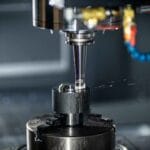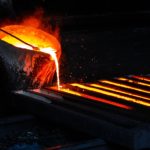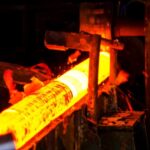As you all know soldering is a process of joining two or more metals or two dissimilar items by melting and putting a filler metal (solder) into the joint and this filler metal have lower melting point than the base metal. Soldering requires practice, skills and some perfect knowledge for doing it. In this article, we are going to talk on various types of soldering and the processes involved in it. The various types of soldering are decided on two criteria, the first one is the temperature requirement and another one is the strength of the joint. Basically, soldering is classified into three parts:
- Soft soldering
- Hard soldering
- Brazing
1. Soft Soldering
The main important characteristics of soft soldering is that the temperature they require is below 400 oC. The filler metals that are used in soft solder are alloys mostly containing lead that have melting point below 350 oC. In soft soldering, the filler material is melted by applying heat to the parts that are to be joined and this heat is also useful to connect the workpieces strongly. In soft soldering, capillary action takes place when workpieces are very close to each other. Soft lead is the basic requirement of this types of soldering process and that’s why it is called as soft soldering.

These are some disadvantages of soft soldering:
- Soft soldering is not applicable at high temperatures as it loses its strength and then melts.
- Soft soldering is unable to make strong joints.
- As this process is not sufficient to make strong joints, it is not useful in case of high load bearing applications of mechanical and other industries.
Also Read:
- What is Brazing and How Does it Work?
- What is Soldering and How it Works?
- What is Difference Between Soldering and Brazing?
2. Hard Soldering
It is also sometimes called as “silver soldering”. This types of soldering process produces stronger joints than the soft soldering. Hard soldering is mostly used to join metals like silver, gold, copper. According to temperature at which solder melts, filler metals is described as easy, medium or hard. The extra-hard solder which is used in this process has silver content upto 80% and melting point of 740 oC. For maintaining metal and solder clean, flux made up of boric acid and alcohol is used. Hard soldering or silver soldering is mostly used by jewellers and plumbers as they need stronger joints.
3. Brazing
Brazing gives us the strongest joints but at the same time it requires hottest temperatures. In brazing, there is mostly requirement of torch or high heat source to fulfill this large temperature requirement. This process is mostly used in repairing wrought-iron furniture, etc. In brazing there is no melting of the base metal, so it gives rise to clean joint without the need of any type of finishing process.

Following are some of the most important brazing methods:
- Torch brazing
- Furnace brazing
- Silver brazing
- Vacuum brazing
- Dip brazing
Advantages of brazing at a glance:
- In brazing there is uniform heating of brazed piece which results in less thermal deformation.
- For massive production brazing is easy to automate.
- Pipes and thin sheets are easily connected by brazing.
- As earlier stated brazing gives rise to neat and clean joint due to which brazing is profitable.
Disadvantages of brazing:
- Due to limitation to the size of the job, large plates of metal are unable to braze.
- The colour of the joint that is produced in brazing is different than the base metal which in turn creates aesthetic advantage.
Some of the various processes of soldering:
1. Induction Soldering
In induction soldering, there is an application of induction heating with the help of high-frequency AC current in the vicinity of copper coil. The most common items for induction soldering are copper, brass and aluminium. The assemblies of RF cable and plumbing are being manufactured by induction soldering. The most important part of the induction soldering is that we are heating up the joints to be soldered without establishing connection to a heat source. Another useful part is that large as well as heavy parts can be efficiently soldered in shorter time duration based on the power output of generator and the design of the inductive coil.
2. Wave Soldering:
In wave soldering, formation of electronic assembly takes place by soldering of electronic components to a printed circuit board (PCB). Wave soldering is used for surface mount as well as through-hole circuit assemblies. It works by passing each circuit board over a pan of molten solder. Proper temperature is required during wave soldering process.
3. Stained Glass Soldering
Previously, tips used in stained glass soldering were made up of copper. Nowadays, electrically heated soldering irons are used. Tiffany-type stained glass is generated by gluing the copper foil around the edges of the pieces of glass and then by soldering them. To created three-dimensional stained glass, this method is used.
4) Hot-Bar Reflow:
In this process, to melt the solder thermode (heating element) is used to heat the coated soldered pieces. During this process, pressure is applied for 15 seconds to fix the component at one place. It is also called as Pulsed Heat Thermode technology. This process gives us the permanent electro-mechanical joint. In this process, to monitor the time-temperature profile closed loop process control is used.
5) Laser Soldering:
To melt and solder an electrical connection joint a laser of power 30-50 W is used. Wavelengths of this laser beam are typically ranging from 808-980 nm. During soldering, the filler metal is heated to melting temperature less than 450 oC by the laser.
Advantages of laser soldering at a glance:
- High accuracy
- Efficient heat input as well as no risk to nearby components.
5) Fiber Focus Infrared Soldering:
It is a technique in which many infrared sources are concentrated at a point at which the connection is to be soldered.
6) Resistance Soldering
The significance of this soldering is that heat required to flow the solder is developed by passing an electric current through the solder. Heat generation takes place whenever a current passes through the resistive material. There are two key parts of resistance soldering:
1) Resistive material that will generate heat
2) For generating sufficient current step-down transformer needed.
Why should you choose resistive soldering:
- Resistance soldering is more efficient than conventional soldering irons.
- There is efficient use of electricity. As there is no wastage of electricity there is reduction in power consumption cost.
- Production of much better joints due to availability of instantaneous heat.
In this article we have learned about different types of soldering process like soft soldering, hard soldering and brazing. Don’t forget to like and share it if you found this article informative.








